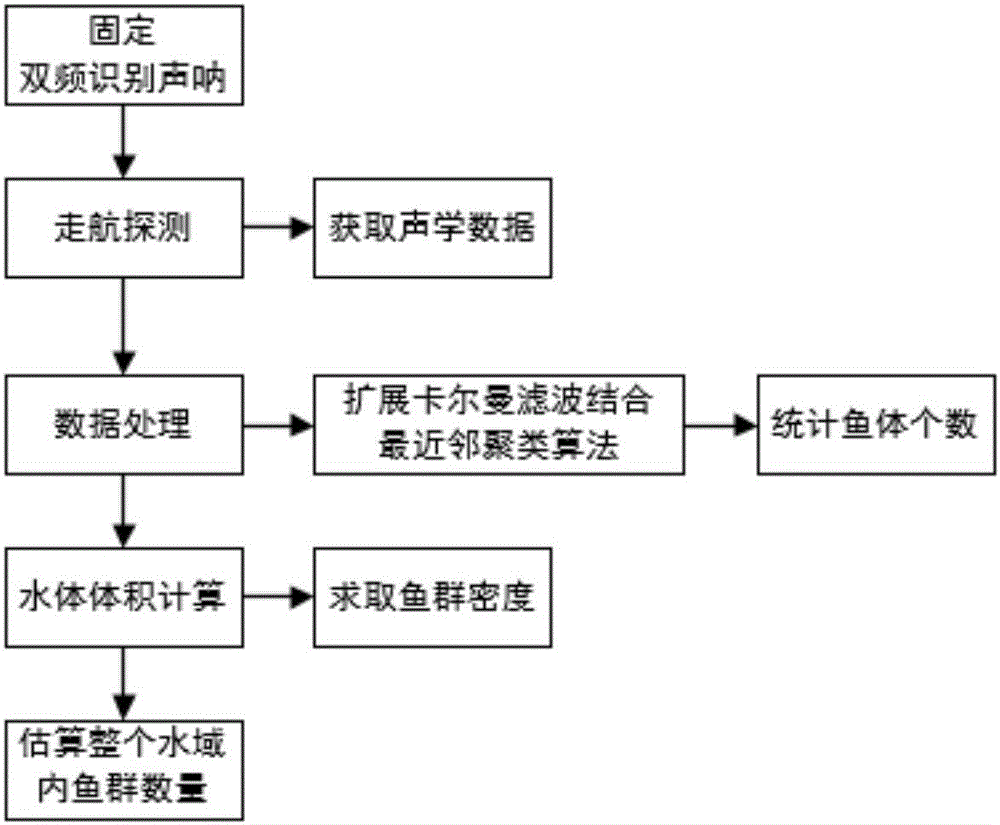Fish school quantity estimation method based on extended Kalman filtering combined with nearest neighbor clustering algorithm
A technology of extended Kalman and clustering algorithm, which is applied in the field of fish population estimation based on extended Kalman filter combined with nearest neighbor clustering algorithm, can solve the problems of large error and damage to fish resources, etc., and the method is simple and easy, high precision effect
- Summary
- Abstract
- Description
- Claims
- Application Information
AI Technical Summary
Problems solved by technology
Method used
Image
Examples
Embodiment Construction
[0056] The present invention will be described in further detail below in conjunction with specific embodiments and accompanying drawings, but the present invention is not limited thereto.
[0057] The dual-frequency identification sonar used in this example is mainly a multi-beam system composed of 3 lenses and a sonar array. It can transmit ultrasonic waves with a frequency of 1.8MHz or 1.1MHz underwater. The minimum beam detection range is 5 meters. The maximum is 40 meters, the rate of receiving data is up to 20 frames of images per second, the detection field of view is 29° in the horizontal direction, and 14° in the vertical direction, the weight in the air is about 7 kg, and the power is about 30W. figure 1 It is a flow chart of the realization of fish population estimation using dual-frequency identification sonar. The main process is described as follows:
[0058] The first step is to fix the dual-frequency identification sonar on the survey vessel. like figure 2 A...
PUM
 Login to View More
Login to View More Abstract
Description
Claims
Application Information
 Login to View More
Login to View More - R&D
- Intellectual Property
- Life Sciences
- Materials
- Tech Scout
- Unparalleled Data Quality
- Higher Quality Content
- 60% Fewer Hallucinations
Browse by: Latest US Patents, China's latest patents, Technical Efficacy Thesaurus, Application Domain, Technology Topic, Popular Technical Reports.
© 2025 PatSnap. All rights reserved.Legal|Privacy policy|Modern Slavery Act Transparency Statement|Sitemap|About US| Contact US: help@patsnap.com



